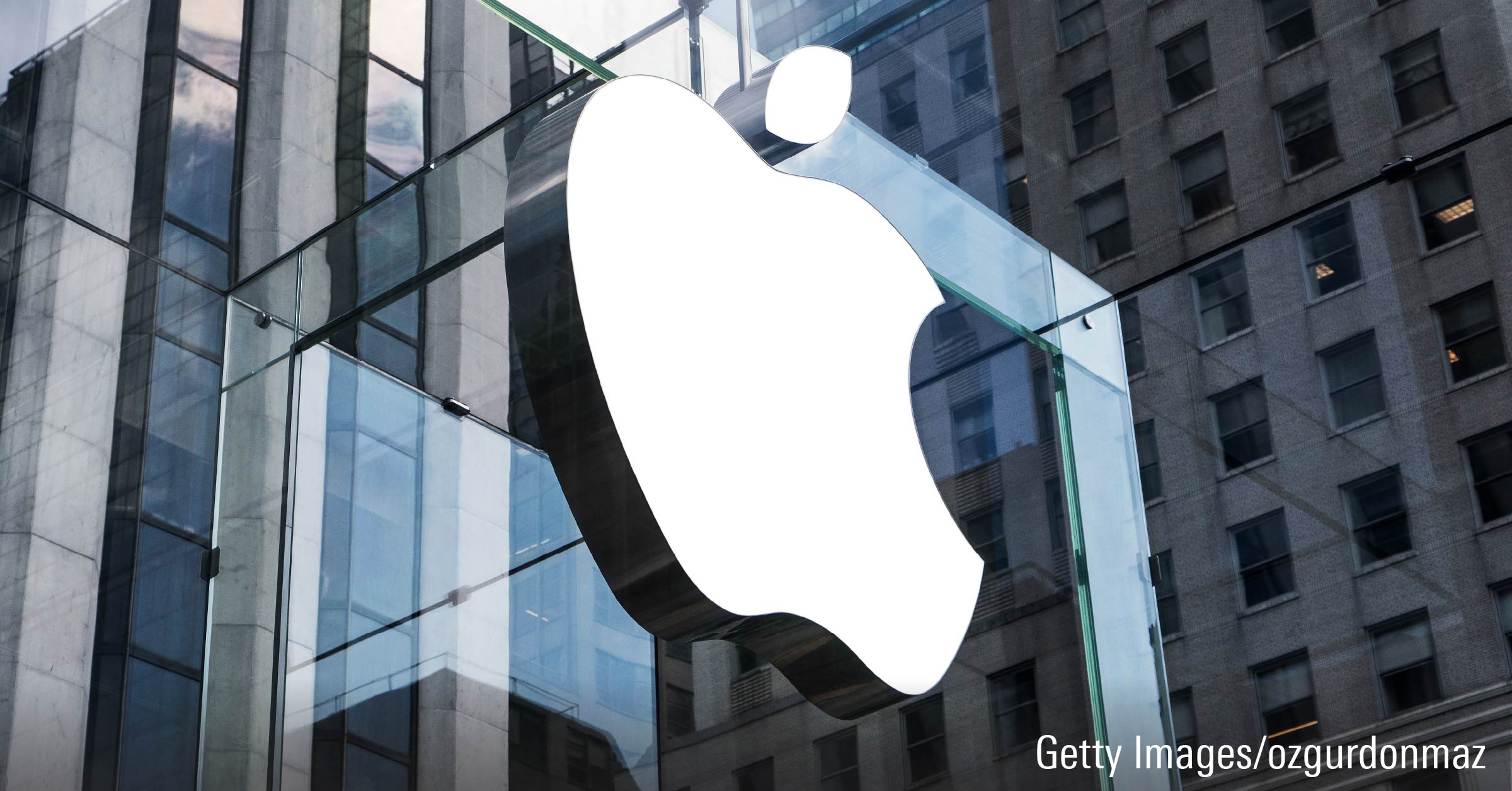Going Into Earnings, Is Apple Stock a Buy, a Sell, or Fairly Valued?
Watching iPhone revenue, gross margins, and services growth.

Apple AAPL is set to release its fiscal third-quarter earnings report on Aug. 1. Here’s Morningstar’s take on what to look for in Apple’s earnings and the outlook for its stock.
Key Morningstar Metrics for Apple
- Fair Value Estimate: $170.00
- Morningstar Rating: 2 stars
- Morningstar Economic Moat Rating: Wide
- Morningstar Uncertainty Rating: Medium
Earnings Release Date
- Thursday, Aug. 1, after the close of trading
What to Watch for in Apple’s Fiscal Q3 Earnings
- We continue to see iPhone revenue as the bellwether for Apple’s business, making up a majority of total revenue. iPhone sales have had headwinds from slowing global refresh cycles and greater competition in China. We will see whether those headwinds remain or dissipate.
- We will also look keenly at Apple’s gross margin, which has been on a steady upward trajectory over the past few years as the firm has brought more of its supply chain in-house and grown its services business.
- Finally, we will look for continued strong (double-digit) growth in services, now Apple’s second-largest business at about a quarter of total revenues.
Apple Stock Price
Fair Value Estimate for Apple
With its 2-star rating, we believe Apple’s stock is overvalued compared with our long-term fair value estimate of $170 per share. Our valuation implies a fiscal 2024 adjusted price/earnings multiple of 26 times, a fiscal 2024 enterprise value/sales multiple of 7 times, and a fiscal 2024 free cash flow yield of 5%.
We project 6% compound annual revenue growth for Apple through fiscal 2028. The iPhone will be the greatest contributor to revenue over our forecast, and we project 3% growth for iPhone revenue over the next five years. We expect this to be driven primarily by unit sales growth, with modest pricing increases. We think pricing increases will be driven primarily by higher features and a mix shift toward the more premium Pro models.
Read more about Apple’s fair value estimate.
Apple Stock vs. Morningstar Fair Value Estimate
Economic Moat
We assign Apple a wide moat, stemming from customer switching costs, intangible assets, and a network effect.
In our view, Apple’s iOS ecosystem extends far-reaching, sticky tendrils into customer wallets, entrenching them with software capabilities and integration across disparate devices like the iPhone, Mac, iPad, Apple Watch, and more. We also see immense design prowess at Apple, most impressively from its deep integration of hardware, software, and semiconductors to create best-of-breed products. Finally, we see a virtuous cycle between Apple’s affluent customer base and its vast ecosystem of developer partners. We believe Apple can leverage these qualities into continued economic profits over the next 20 years.
Read more about Apple’s economic moat.
Financial Strength
We expect Apple to focus on using its immense cash flow to return capital to shareholders while increasing its net leverage over the medium term. The firm has a terrific balance sheet, with a net cash position of $51 billion as of September 2023. Management has set a goal to eventually become cash-neutral, though there is no set timetable. We don’t anticipate the company to hit this target in the next five years, but it should progress toward it. Since announcing the goal in 2018, Apple has reduced its net cash position by more than half, from over $100 billion.
Apple supplements its strong balance sheet with impressive cash flow. Over the last five years, the firm has averaged more than $85 billion in free cash flow generation annually, and we forecast more than $100 billion annually over the next five years. Since 2019, this cash flow has generated an average free cash flow margin of more than 25% and converted more than 100% of net income into free cash flow. We anticipate the firm will hit these figures over our five-year forecast as well.
Read more about Apple’s financial strength.
Risk and Uncertainty
We assign Apple a Medium Uncertainty Rating. We believe the firm’s greatest risk is its reliance on consumer spending, which sees great competition and cyclicality. Apple is at constant risk of disruption, just as the iPhone disrupted BlackBerry in the budding smartphone market. The iPhone could be unseated by a new device or “super app.” Still, we view the firm as defending against this risk by introducing new form factors (like a watch and an augmented reality headset) and selling an ecosystem of software and services on top of hardware.
We also see geopolitical risk arising from Apple’s supply chain. It heavily depends on Foxconn for assembly and Taiwan Semiconductor Manufacturing TSM for chip production. If there were a souring of relations between the United States and China, or if China threatened Taiwan, Apple could see a severe hit to its supply. Additionally, the Chinese government has recommended that government officials not conduct business on iPhones, which presents a current and potential future risk to Apple’s sales in China.
Read more about Apple’s risk and uncertainty.
AAPL Bulls Say
- Apple offers an expansive ecosystem of tightly integrated hardware, software, and services, which locks in customers and generates strong profitability.
- We like Apple’s move to in-house chip development, which has accelerated its product development and increased its differentiation.
- Apple has a stellar balance sheet and sends a great deal of cash flow back to shareholders.
AAPL Bears Say
- Apple is prone to consumer spending and preferences, which creates cyclicality and opens it to disruption.
- Apple’s supply chain is highly concentrated in China and Taiwan, making it vulnerable to geopolitical risk. Attempts to diversify into other regions may pressure profitability or efficiency.
- Regulators have a keen eye on Apple, and recent regulations have chipped away at parts of its sticky ecosystem.
This article was compiled by Krutang Desai.
The author or authors do not own shares in any securities mentioned in this article. Find out about Morningstar’s editorial policies.

/s3.amazonaws.com/arc-authors/morningstar/ca129aad-9614-4bf0-993b-3df5f6bfa41e.jpg)
/cloudfront-us-east-1.images.arcpublishing.com/morningstar/CFV2L6HSW5DHTFGCNEH2GCH42U.jpg)
/cloudfront-us-east-1.images.arcpublishing.com/morningstar/7AHOQA64TFEQDMYMIMM6VUHYLY.png)
/cloudfront-us-east-1.images.arcpublishing.com/morningstar/JA7LQ2INFNFTZFBJLSDUZGIPJQ.png)
:quality(80)/s3.amazonaws.com/arc-authors/morningstar/ca129aad-9614-4bf0-993b-3df5f6bfa41e.jpg)